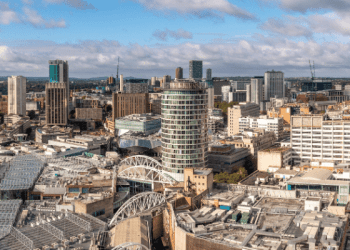Stamp duty is a major consideration whenever you want to buy a residential property. The good news is that if you’re a first time buyer, you’ll pay much less, or even nothing! Read on, and discover how stamp duty relief for first time buyers works.
FAQs
What is stamp duty?
Stamp Duty Land Tax (SDLT) is a tax paid on all property purchases over a certain value in England and Northern Ireland. Wales and Scotland don’t have SDLT, but they do have very similar schemes with slightly different rules.
Do first time buyers pay stamp duty?
First time buyers are not exempt from stamp duty. However, if you’re buying for the first time, you’ll pay less. This is because the value threshold for when you start paying SDLT is higher.
The government brought in the ‘SDLT relief for first time buyers’ policy in late 2017. It means that first time buyers currently pay zero stamp duty on residential property worth £425,000 or less. Normally, you would start paying SDLT at £250,000.

How did stamp duty change in 2022?
The government introduced two changes to stamp duty as part of its September 2022 ‘mini budget’. Firstly, the 0% SDLT band was raised from £125,000 to £250,000. Secondly, the 0% threshold for first time buyers was increased from £300,000 to £425,000.
How much do first time buyers pay stamp duty in 2024?
At the time of writing (January 2024) the stamp duty changes brought in during 2022 are still in place. The amount you pay as a first time buyer is 0% if the value of the property is £425,000 or under. You will pay 5% stamp duty on the remainder of the sales price, up to a value of £625,000.
Be aware that if you are buying a property that is worth over £625,000, you will pay the full, normal rate of stamp duty. It doesn’t matter if you are a first time buyer in this case, you will have to pay stamp duty at the same rate as normal buyers. The first time buyer SDLT relief policy was designed to help people get on the property ladder, which is why there is this property value threshold.
A simple way to figure out how much you’ll pay on your planned purchase is to use a stamp duty calculator. The HomeOwners Alliance has a good one here. They also have a full breakdown of the different stamp duty bands for all parts of the UK.

How do I qualify as a first time buyer?
Qualifying as a first time buyer is simple. Firstly, you have to have never owned a residential property before in the UK. Secondly, the property you’re buying must be your main residence, it can’t be buy-to-let or a second home.
Can I pay stamp duty in instalments?
Sadly, you cannot pay stamp duty in instalments. The full amount of SDLT owed must be paid to HM Revenue and Customs within 30 days of the completion of the property’s sale.
Can I get a refund on stamp duty?
There are some situations where you can get refunds on stamp duty. However, these are mostly related to SDLT higher charges on purchases of second homes or buy-to-let property. If you’re a first time buyer, it is unlikely that you will qualify for any kind of stamp duty refund.
We have a full description of stamp duty refunds, and how to claim them.
How do I pay stamp duty?
Paying stamp duty is usually done by the buyer’s conveyancing solicitor as part of the sale completion. You can do it yourself if you prefer, or if you aren’t using a conveyancer. This UK Gov guide gives you an overview on how to pay stamp duty, and what deadlines are involved.

How do first time buyers avoid stamp duty?
Avoiding stamp duty entirely as a first time buyer is difficult because there are few exceptions that apply beyond the SDLT relief policy. The best way to avoid it is to purchase a property worth under, or as close to, £425,000 as possible. If you can negotiate the price down to this marker, you’ll save yourself an SDLT bill.
How can you avoid stamp duty if you’re not a first time buyer?
If you’re not a first time buyer, there are very few ways to legally avoid stamp duty. However, there are a few possibilities and minor exemptions to consider:
- Buy the property in the name of a family member, provided that they are a first time buyer.
- Purchase a property worth £40,000 or less – all properties of this price are fully exempt from SDLT.
- Buy a motorhome, caravan or houseboat – these are all exempt from SDLT, no matter how much they cost.
Are there any proposed changes to stamp duty?
The cuts to stamp duty introduced in 2022 are due to end in 2025. This means that any property transaction until 31 March 2025 can benefit from the reduced stamp duty thresholds. However, at the time of writing (January 2024), the reductions to the stamp duty threshold are due to be reversed after this time.
As such, standard stamp duty rates will revert to 5% for transactions over the value of £125,000. For first-time buyers, stamp duty will be owed on transactions over the value of £300,000. However, with 2024 being an election year, and housing being a hot-button political issue, it’s possible that stamp duty rules will change again in the near future.
If you have more specific stamp duty questions, we have answers. Our dedicated guides to paying stamp duty on a second home, or how to reclaim stamp duty can help.
Read more
HomeViews provides verified resident reviews of the UK’s housing developments. We’re working with developers, house builders, operators, housing associations and the Government to recognise high performers and help improve standards in the built environment.



































